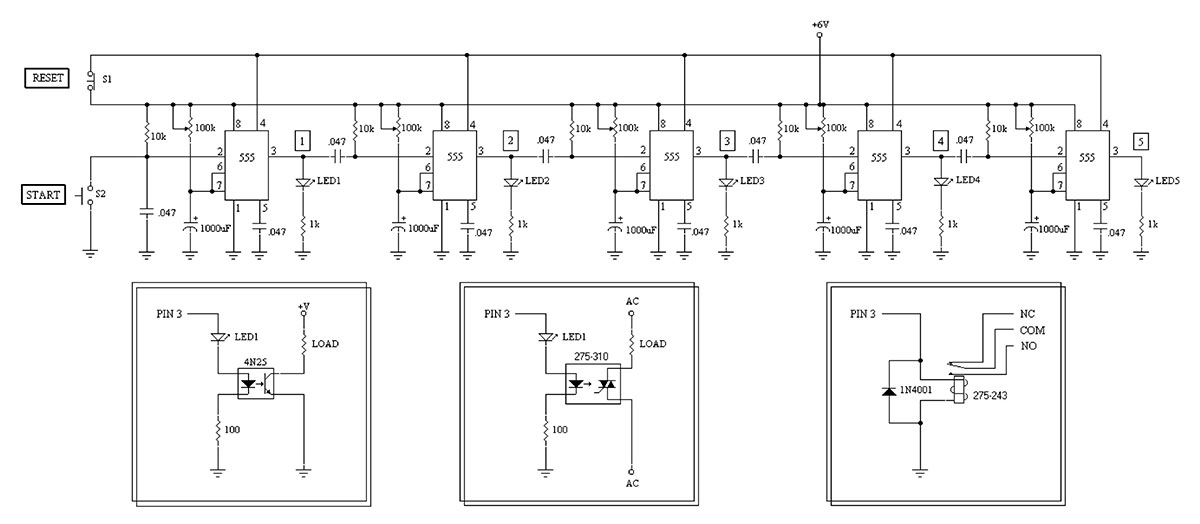With TJ Byers
Special Effects Timer
Question:
I'm in need of a digital timer that has multiple outputs. I want to use it to control the sequence of events in a portable special effects project. It has to be battery operated, or able to use a DC wall transformer, and must have a digital display of the sequence in progress. The output level isn't critical, because all I need is a relay to trigger the event. Two to five out- puts would be ideal.
L. Bearden
via Internet
Answer:
Not a tall order, but one that you'll have to be careful putting together. First, I'd use a string of CMOS 555 timers (TLC555 or equivalent) for the sequencer. They consume virtually no power, and are inexpensive (less than a buck). A five-stage sequencer looks like this.

Pressing S2 starts the sequencer, and S1 resets it. As each stage times out, the falling edge triggers the next stage. The time between stages is determined by the 100K pot and 1000 µF capacitor, which has a range of a couple of seconds up to about three minutes. As the sequence progresses, one stage turns off, and the next turns on, as indicated by the LED on the output pin (pin 3). This LED can also be used to trigger an optoisolator, to close a relay, or to control an SCR or triac.
If you want both a digital indicator and an optoisolator, simply wire the two LEDs in series with an appropriate current-limiting resistor, as shown in the insert boxes. The precaution is that you must very carefully bypass each and every Vcc pin (pin 8) with a 0.1 µF capacitor and the Voltage Control pin (pin 5) with a 0.047 µF capacitor as close to the IC as possible, as shown on the schematic. Also, return all the digital grounds to one point, and the analog (LED or relay) grounds to another, then connect the two grounds together via a single wire. The circuit can be powered with four 'C' cell batteries, or from a six-volt wall transformer.


Comments